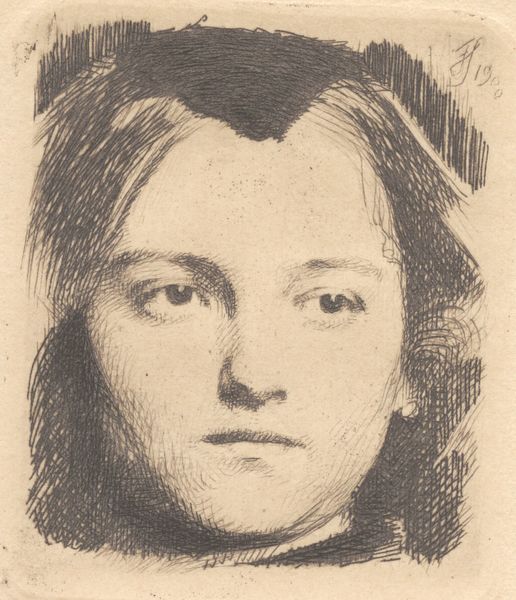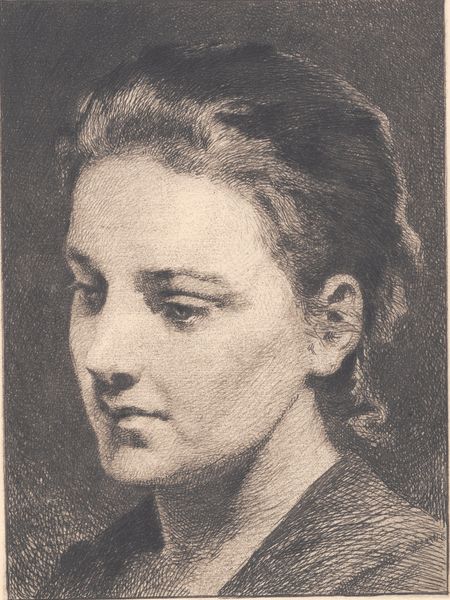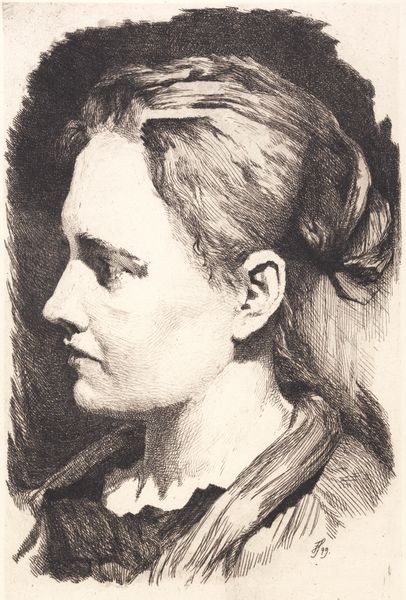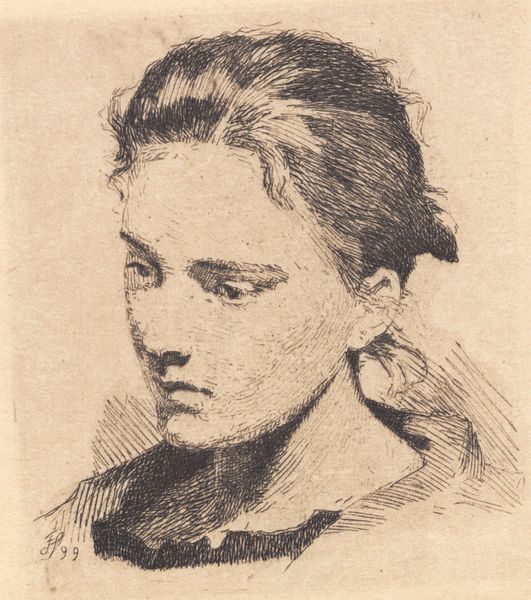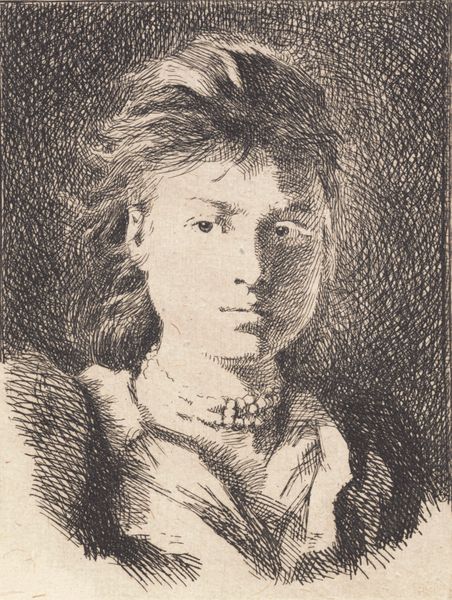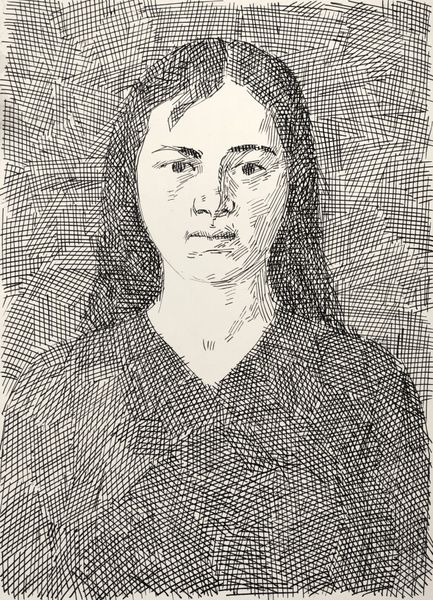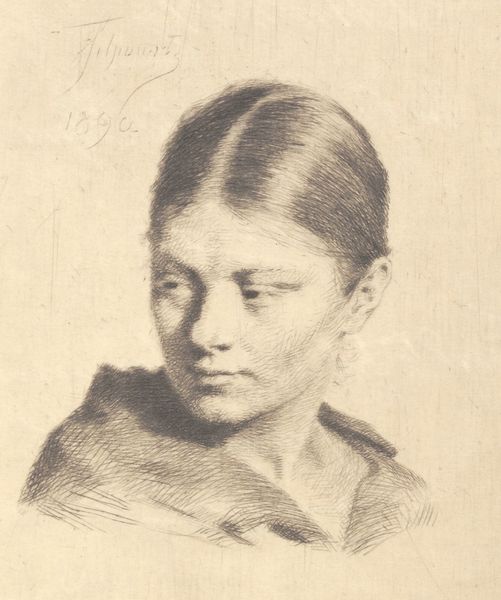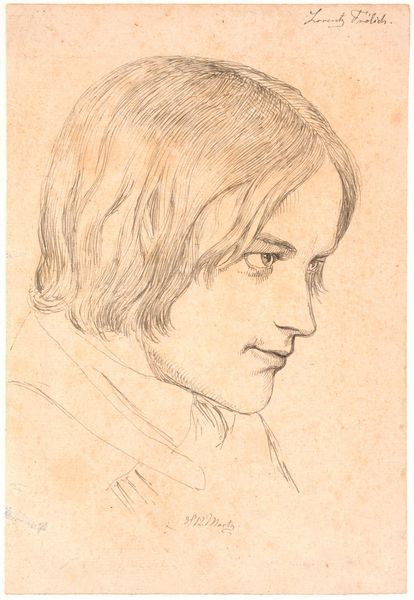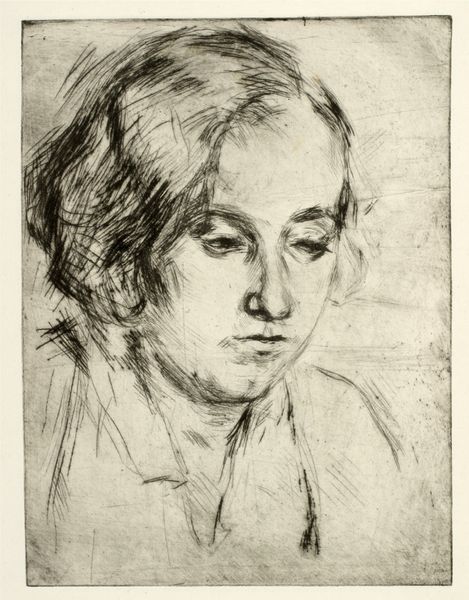
print, etching
#
portrait
# print
#
etching
#
modernism
#
realism
Dimensions: 61 mm (height) x 51 mm (width) (plademaal)
Curator: I'm struck by the immediacy of this small print. It’s an etching titled "Ungt kvindehoved, en face, med snip. Prøveplade," or "Young Woman's Head, full face. Proof Plate," created around 1900 by Frans Schwartz, currently held at the SMK, the National Gallery of Denmark. The artist captures the woman's face directly, focusing on her expression. Editor: Yes, she's looking right at us. There’s a sort of earnestness to her gaze that's immediately compelling. And the delicate etching lines… you can almost feel the artist's hand at work, a network of labor. Curator: Precisely! I see the artist exploring the etching process itself. Look closely and you can almost sense Schwartz experimenting, finding a balance between control and chance as he manipulates the metal plate. Each mark is considered yet also yields to the inherent properties of the medium. The materials speak through him. Editor: It's interesting to think about what an art education would be like in the 1900s in Denmark. What role did portraiture play? Who would commission or buy an etching of an anonymous young woman? Were these proof plates displayed publicly at the time, or primarily a method to evaluate his production and sharpen skills? Curator: Considering the social conventions of the period, these portraits of young women often carried symbolic weight relating to ideal beauty and virtue. Furthermore, prints democratized art ownership. More people could potentially acquire this art as a means of displaying personal refinement, adding new levels of visibility and prestige for both the artists and collectors involved. Editor: I imagine that creating a market for this print was key to Schwartz's success as a portraitist, but I wonder what part galleries or perhaps exhibitions played. Also, how has the context and setting shaped this young woman's place in art history? The print exists on a continuum from proofing plate to art object. Curator: It speaks volumes about art's capacity to immortalize, doesn't it? To capture not just a likeness but an era, the social and cultural values embedded within a single etched line. Editor: Agreed. This etching challenges what we often consider conventional, offering us an engaging example of social agency within art from turn of the century Denmark. It inspires you to really consider how and where labor practices impact an artwork.
Comments
No comments
Be the first to comment and join the conversation on the ultimate creative platform.

